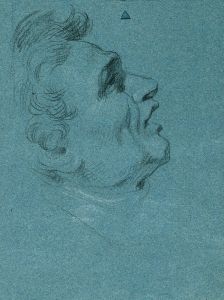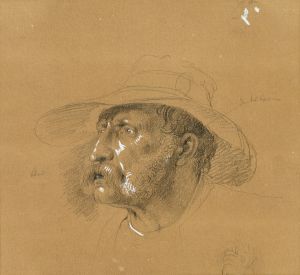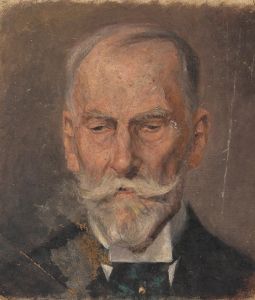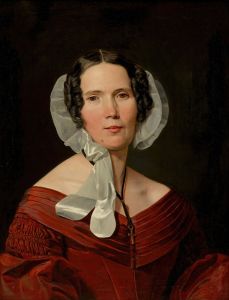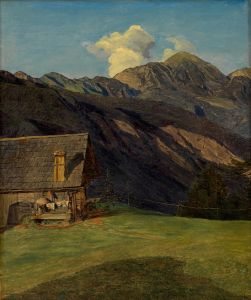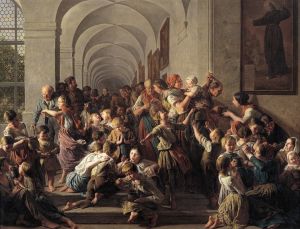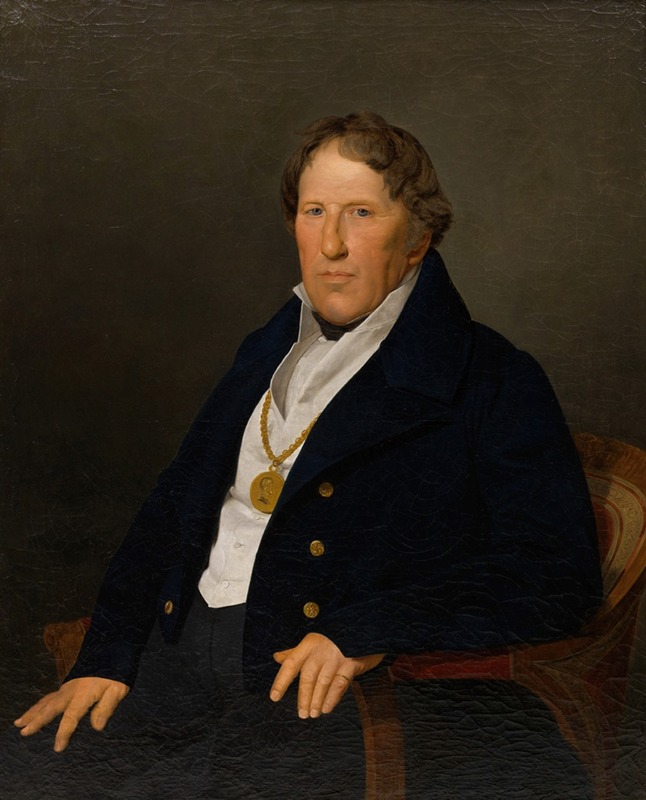
Der Schiffsmeister Mathias Feldmüller
A hand-painted replica of Ferdinand Georg Waldmüller’s masterpiece Der Schiffsmeister Mathias Feldmüller, meticulously crafted by professional artists to capture the true essence of the original. Each piece is created with museum-quality canvas and rare mineral pigments, carefully painted by experienced artists with delicate brushstrokes and rich, layered colors to perfectly recreate the texture of the original artwork. Unlike machine-printed reproductions, this hand-painted version brings the painting to life, infused with the artist’s emotions and skill in every stroke. Whether for personal collection or home decoration, it instantly elevates the artistic atmosphere of any space.
Ferdinand Georg Waldmüller, an Austrian painter renowned for his contribution to the Biedermeier period, created the painting "Der Schiffsmeister Mathias Feldmüller." Waldmüller was born on January 15, 1793, in Vienna, Austria, and became one of the most prominent artists of his time, known for his detailed and realistic portrayal of everyday life and landscapes. His works are celebrated for their vibrant colors, meticulous attention to detail, and the ability to capture the essence of his subjects.
"Der Schiffsmeister Mathias Feldmüller" is one of Waldmüller's notable works, although specific details about the painting, such as its creation date and current location, are not widely documented. The painting is presumed to depict Mathias Feldmüller, a shipmaster, which aligns with Waldmüller's interest in portraying individuals from various walks of life, highlighting their roles and contributions to society.
Waldmüller's artistic style is characterized by a focus on realism and naturalism, which is evident in his portrayal of human figures and their environments. His works often reflect the socio-economic conditions of the time, providing insight into the lives of both the bourgeoisie and the working class. This approach is consistent with the Biedermeier period, which emphasized a return to simplicity and domesticity following the tumultuous Napoleonic Wars.
Throughout his career, Waldmüller was dedicated to capturing the beauty of nature and the subtleties of human expression. His paintings often feature a harmonious blend of light and shadow, bringing a sense of depth and vitality to his subjects. This technique is likely present in "Der Schiffsmeister Mathias Feldmüller," showcasing Waldmüller's skill in rendering lifelike portraits.
Waldmüller's influence extended beyond his paintings; he was also an advocate for artistic education and reform. He believed in the importance of studying nature directly and encouraged young artists to observe and depict the world around them with honesty and precision. His teachings and writings contributed to the development of art education in Austria, leaving a lasting impact on future generations of artists.
Despite facing challenges in his career, including conflicts with the Vienna Academy of Fine Arts, Waldmüller's dedication to his craft never wavered. He continued to produce works that resonated with the public and critics alike, securing his legacy as a master of the Biedermeier style.
Today, Ferdinand Georg Waldmüller's paintings are held in high regard and are featured in various museums and collections worldwide. His ability to capture the essence of 19th-century Austrian life through his art has made him a significant figure in art history. While specific information about "Der Schiffsmeister Mathias Feldmüller" may be limited, Waldmüller's overall body of work continues to be celebrated for its contribution to the cultural and artistic heritage of Austria.






